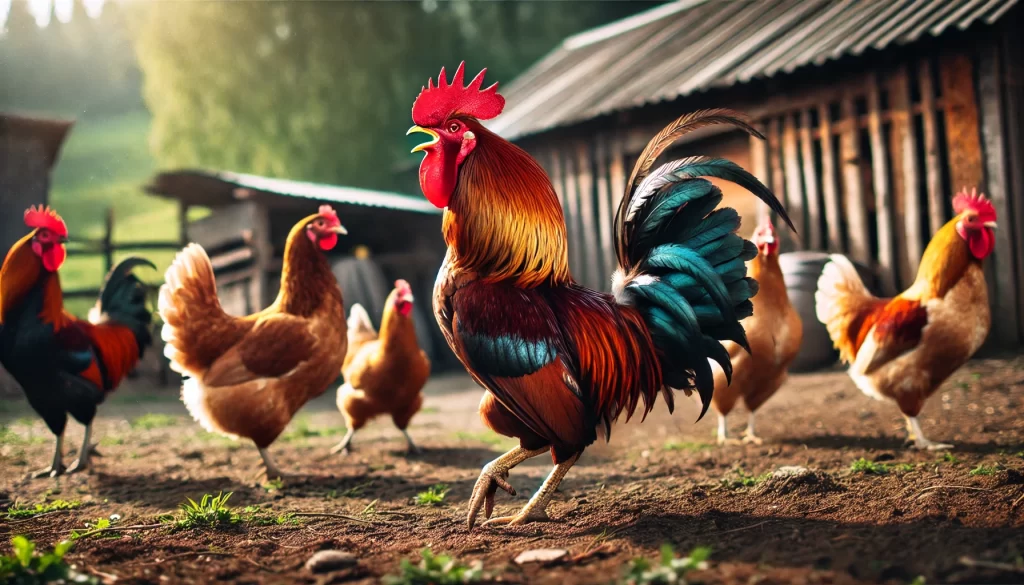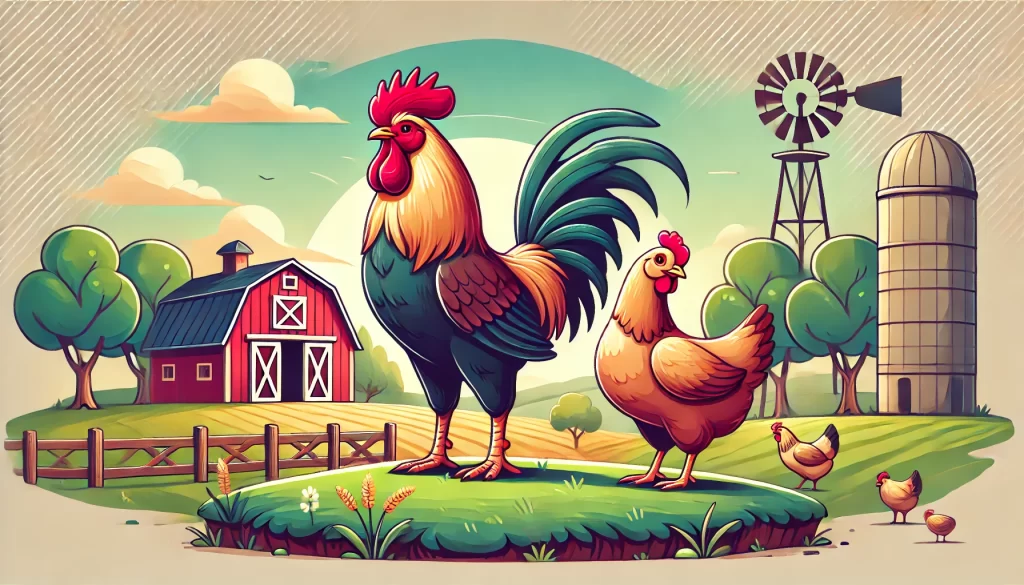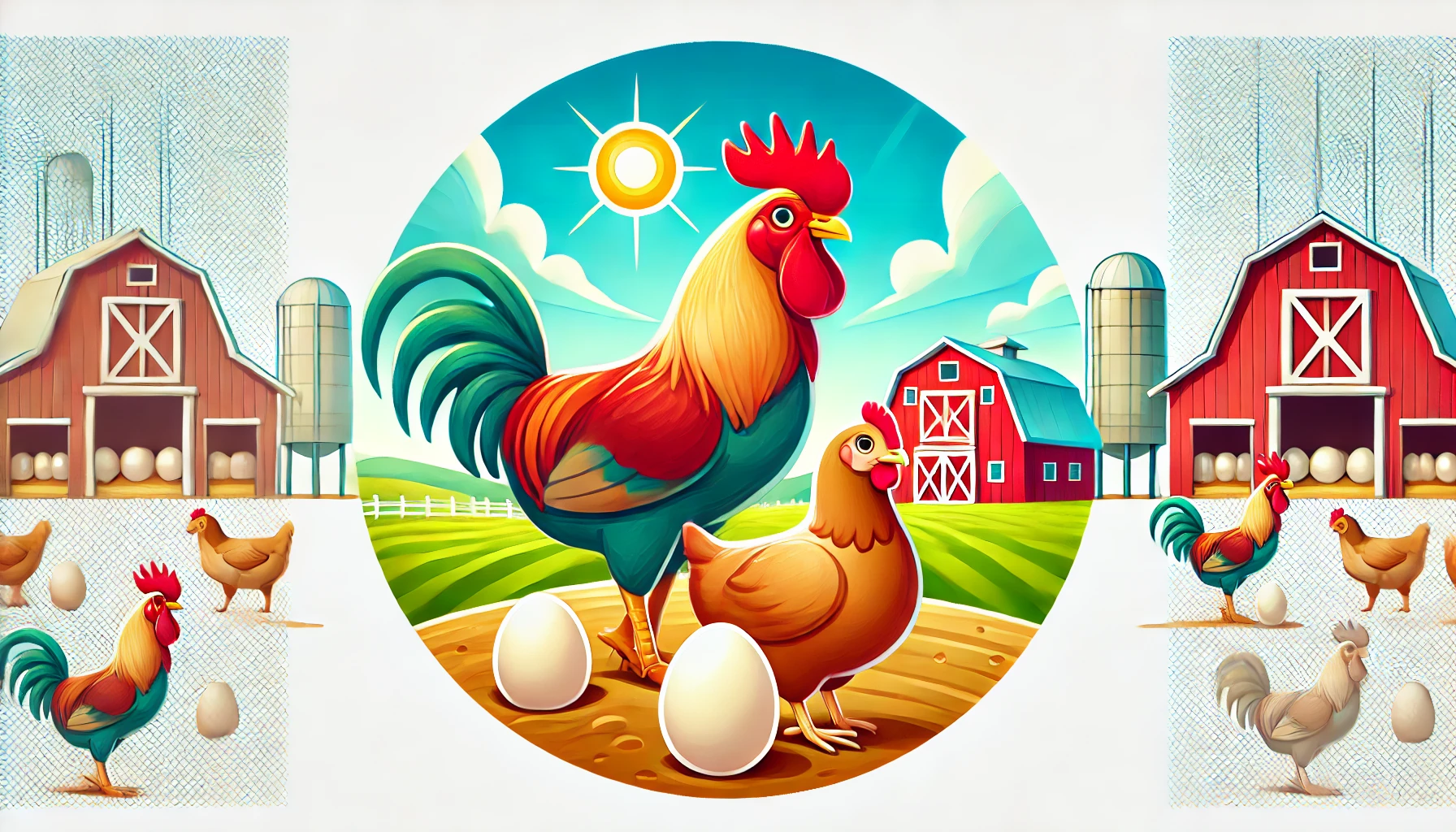Table of Contents
When it comes to chickens, not all eggs are the same. Some eggs are fertilized and have the potential to become baby chicks, while others remain unfertilized. But how does a rooster fertilize eggs? This is an essential question for anyone interested in understanding poultry reproduction. Let’s look at the process from start to finish to uncover precisely how a rooster fertilizes eggs.
Understanding Chicken Mating Behavior

Chickens don’t reproduce like mammals; their mating behavior might surprise you. The process of how a rooster fertilizes eggs involves a series of behaviors that help the rooster ensure successful fertilization before the hen can lay her eggs.
The Courtship Dance
Before fertilization begins, a rooster engages in a unique courtship behavior. He may strut, puff up his feathers, and make low clucking sounds to attract the hen’s attention. This dance is crucial to how a rooster fertilizes eggs, showing his dominance and readiness to mate. The hen’s response indicates her willingness to allow the process to move forward.
The Cloacal Kiss – How Does a Rooster Fertilize Eggs?

Once the hen is receptive, fertilization happens through a process known as the cloacal kiss. This is a critical step in how a rooster fertilizes eggs. Both the rooster and hen have an opening called a cloaca, which serves multiple purposes, including reproduction.
Cloaca – The Reproductive Opening
Unlike mammals, chickens don’t have external reproductive organs. Instead, they both rely on the cloaca, an internal structure, for mating. The cloacal kiss is when the rooster’s and hen’s cloacas meet, allowing sperm to transfer, an essential part of how a rooster fertilizes eggs.
The Sperm Journey
After the sperm is deposited, it travels up the hen’s reproductive tract to fertilize her eggs. Hens can store sperm for several days, so how a rooster fertilizes eggs can affect more than one egg after a single mating session. This natural efficiency is why poultry farming often involves fewer roosters than hens.
How Eggs Are Fertilized After Mating
Once the sperm reaches the hen’s reproductive tract, the fertilization process begins. Understanding how a rooster fertilizes eggs helps explain how the fertilized egg turns into a baby chick.
Fertilization Takes Place Before the Eggshell Forms
Eggs start forming in the hen’s ovary as yolks. After mating, the sperm must meet the yolk before egg whites and a shell cover it. This is the critical stage in how a rooster fertilizes eggs. If the egg is fertilized, it will become a chick once incubated. If not, it remains a regular egg like those in the grocery store.
How Hens Store Sperm for Future Eggs
Hens can store sperm in their bodies for up to two weeks. This storage capability is essential in how a rooster fertilizes eggs, as it ensures the hen can lay multiple fertilized eggs even after one mating session. This natural adaptation ensures efficient reproduction, which is critical in poultry breeding.
Signs That an Egg Is Fertilized
Many people wonder how to tell if an egg is fertilized. Once you understand how a rooster fertilizes eggs, the next step is identifying whether the egg is fertilized.
Candling Eggs to Check for Fertilization
Farmers often use candling to check if an egg has been fertilized. Holding the egg up to a light source is known as candling. If the egg was fertilized during how a rooster fertilizes eggs, the light would reveal a small, dark spot with veins inside, indicating that an embryo is developing.
Differences in Appearance
On the outside, fertilized eggs look almost identical to unfertilized eggs. However, inside, the development process reveals how the rooster’s role in fertilizing eggs creates a chick. The appearance of the egg doesn’t change much from the outside, but the internal changes directly result from how a rooster fertilizes eggs.
The Development of a Chick Inside the Egg
After fertilizing the egg, the embryo begins to develop into a chick. This process is only possible because a rooster fertilizes eggs, setting the stage for life inside the egg.
The Incubation Process
The fertilized egg must be incubated at the right temperature and humidity to grow into a chick. This process helps nurture the embryo formed through how a rooster fertilizes eggs. Hens naturally incubate their eggs by sitting on them, ensuring they stay warm until hatching.
How Long Does It Take for a Chick to Hatch?
Typically, a chick takes around 21 days to develop and hatch from a fertilized egg fully. This time frame is consistent regardless of the breed and highlights the remarkable efficiency of how a rooster fertilizes eggs and the following development.
Also Read: What Does How Many Mean in Math? Unlock Its Wonders!
The Importance of Roosters in the Flock
While hens can lay eggs without roosters, those eggs will never hatch into chicks. Understanding how a rooster fertilizes eggs emphasizes the rooster’s vital role in flock reproduction.
Protecting the Flock
Roosters play an essential role beyond just fertilizing eggs. They also protect the flock from predators, ensuring the hens are safe while they lay eggs. This protective behavior is why roosters are essential to flock health and reproduction, reinforcing the importance of how a rooster fertilizes eggs.
Managing the Rooster-to-Hen Ratio
A balance between roosters and hens is necessary to maintain harmony in the flock. Too many roosters can lead to aggression, while too few can reduce egg fertilization efficiency. Knowing how a rooster fertilizes eggs helps farmers manage their flocks more effectively, with a recommended ratio of one rooster for every 10 to 12 hens.
So, how does a rooster fertilize eggs? The process begins with courtship behavior, continues with the cloacal kiss, and ends with the creation of a chick inside a fertilized egg. Understanding the rooster’s role in fertilizing eggs and the development of a chick helps us appreciate the natural wonder of poultry reproduction.
Roosters are essential in maintaining a flock’s cycle of life. Without them, eggs would remain unfertilized, and the miracle of hatching chicks wouldn’t be possible. By understanding how a rooster fertilizes eggs, we can better care for chickens and respect the natural processes that bring new life into the world.

